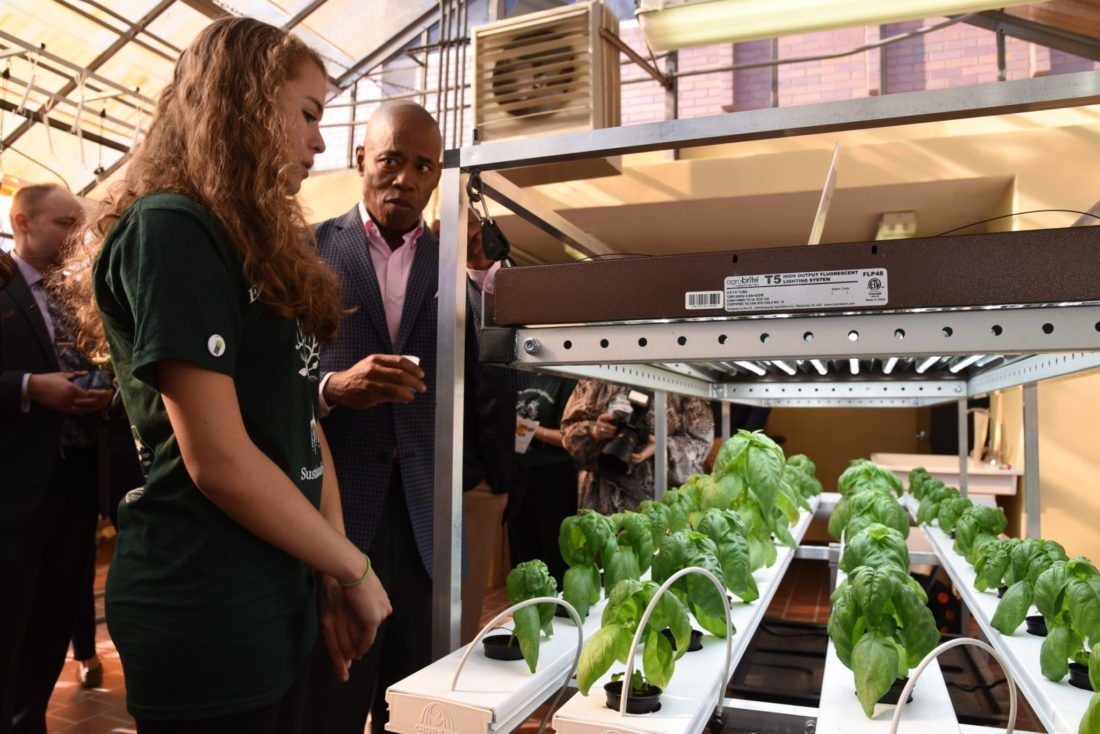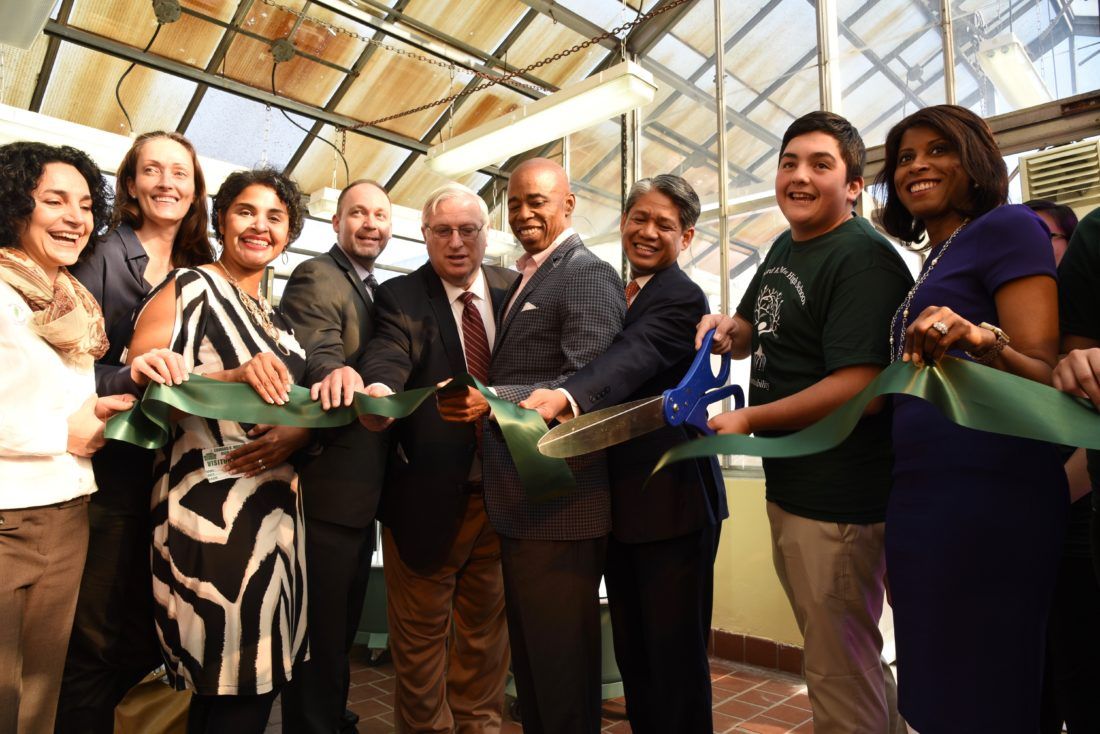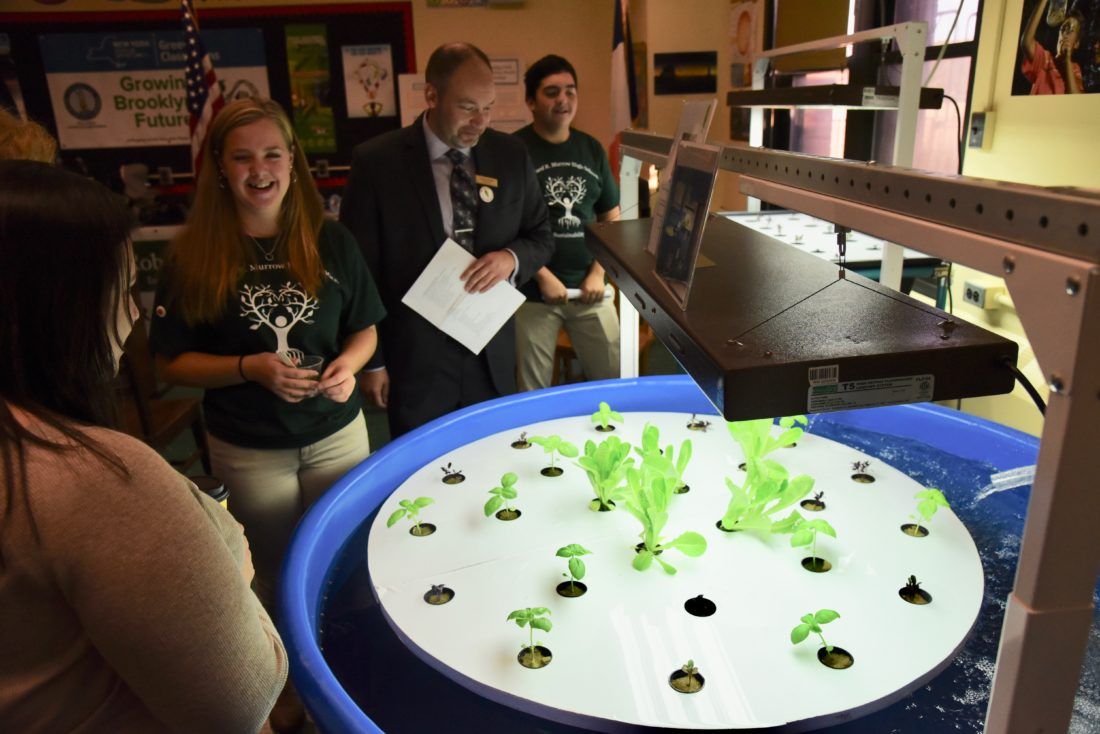Rooftop Greenhouse Brings Lettuce and Learning to Edward R. Murrow High


MIDWOOD – In a hot, brightly lit greenhouse on the roof of Edward R. Murrow High School, vegetables—and possibly careers—are growing in Brooklyn.
A new greenhouse, part of the $10 million “Growing Brooklyn’s Future” program, is giving students a chance to get hands on with a new science and sustainability curriculum that pushes sustainable, green learning.
Escorting visitors upstairs, Ryan Vaz, a 10th grade student ambassador, talked about his experience trying to grow celery for science project before the greenhouse opened.
“We had to grow it in a damp closet,” said Vaz, “and it didn’t do well. The project results were… less than conclusive.”
With limited resources and systems, many of the plants and projects died. School breaks meant overwatering the plants on a Friday and hoping for the best—only to come back to wilted crops and dried-out dreams.
But now, students can easily grow and maintain all manner of vegetables and herbs in their new greenhouse on the high school’s 3rd floor roof, which was full to bursting with towers of lettuce leaves, trays of microgreens, and climbing vines of tomatoes and zucchini.

The project even featured an aquaponics component—a giant, gently swirling tub with a floating pad of plants, which housed sustainable tilapia fish, which will provide the gardens with fertilizer.
Brooklyn Borough President Eric Adams was on hand to inaugurate the greenhouse, along with a panel of project stakeholders from the New York Power Authority and NY Sun Works.
Adams praised the students’ work in the greenhouse, learning about STEM (Science, Technology, Engineering & Math) as well as responsible stewardship of the natural world, which “we’ve abused, discarded and treated in an inhuman fashion.”
He hoped the fruits—or at least vegetables—of the students’ labor could be brought to the cafeteria and the community at large, to help fight “invasive diseases” that plague some parts of Brooklyn. Adams was quick to remind those gathered about his successful fight against diabetes, which he credits to a plant-based diet.
Edward R. Murrow High School Principal Allen Barge spoke as well, praising the new project as “a place where students can love science.” One of his students, “eager and excited” by the potential projects afforded by the green classroom, even scheduled a 7:30 am meeting with Barge to discuss community outreach the high schoolers could engage in related to the greenhouse.
The Green Classroom initiative was funded by the New York Power Authority and the Brooklyn Borough President’s office to expand STEM curriculum and give city students hands-on experience in urban farm science.
Local non-profit NY Sun Works was granted more than $100,000 to build greenhouses at six schools in Brooklyn and integrate science and sustainability into the school curriculum.
The 676-square foot greenhouse-cum-science-lab is able to grow 200-400 plants at any given time and turn out roughly 2,000 lbs of produce each year. The hydroponic systems require very little soil and will grow plants with 80-90% less consumption of water.
Students stood by to showcase their plant systems to visiting officials, and had set out a few snacks for the guests to try, like pesto made from basil grown on site. NYPA President Gil Quiniones even took a turn on the pedal-powered smoothie station, spinning up a drink on the “fender blender.”
Health and community outreach aside, the high school students present also let on to another big bonus of a hands-on laboratory like the greenhouse: a opportunity for CV-boosting projects as they start into the über-competitive college admissions process.
“It definitely looks good on college applications,” admitted Vaz, who is pivoting from celery into an algae-based project for the upcoming New York City Science & Engineering Fair. “There’s space for fun and learning, but also competition.”